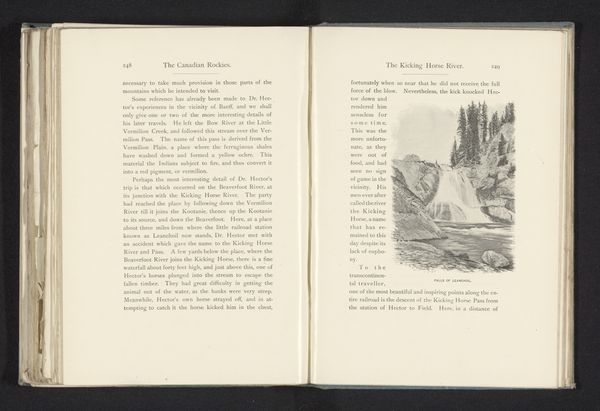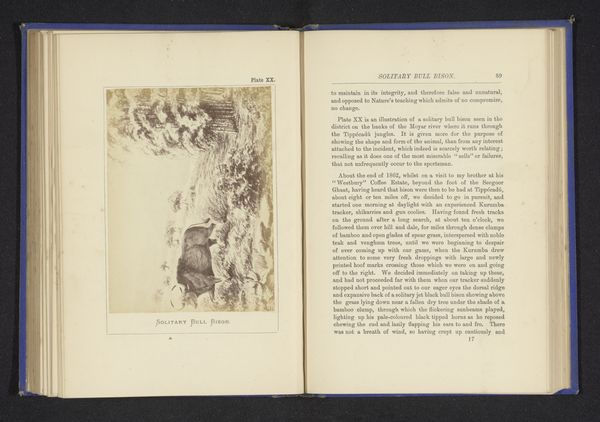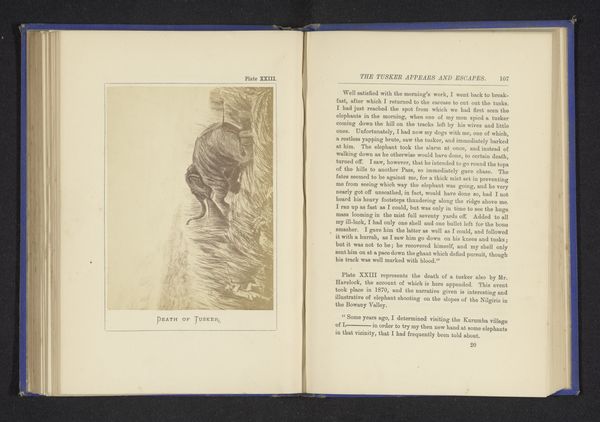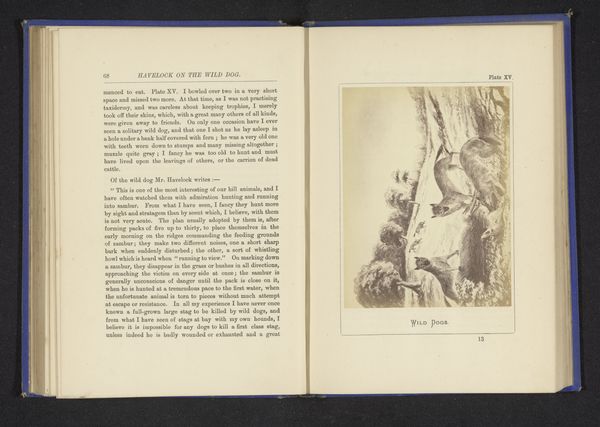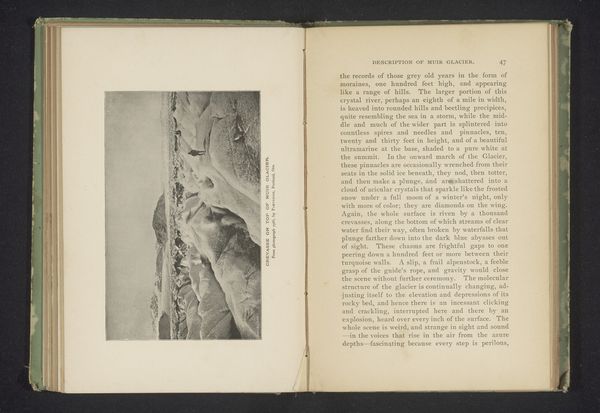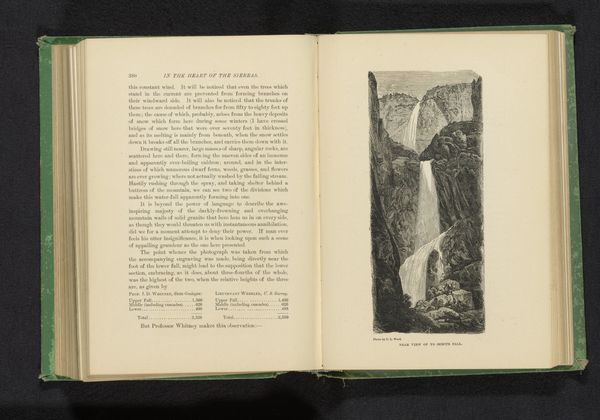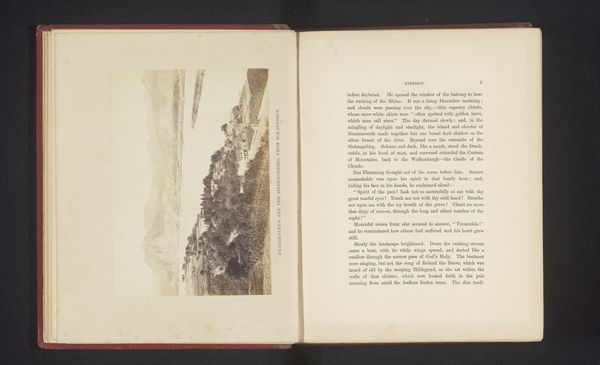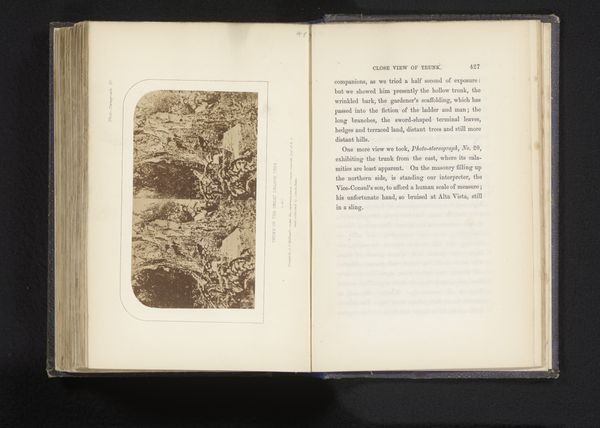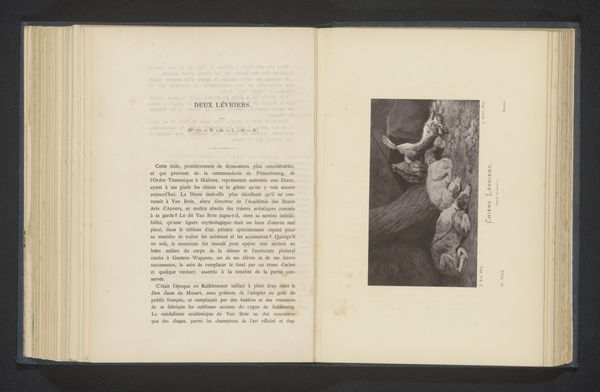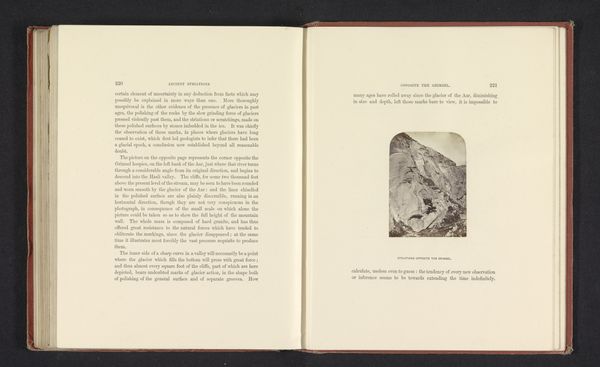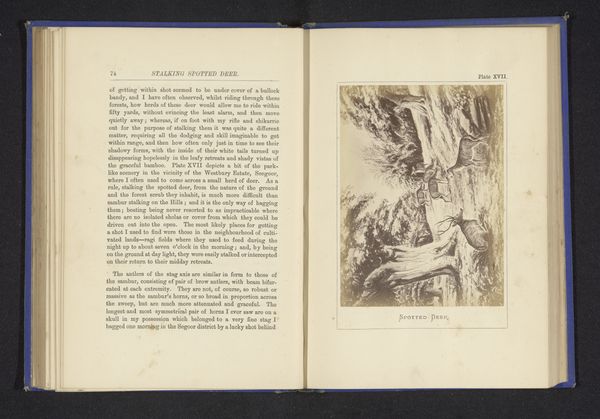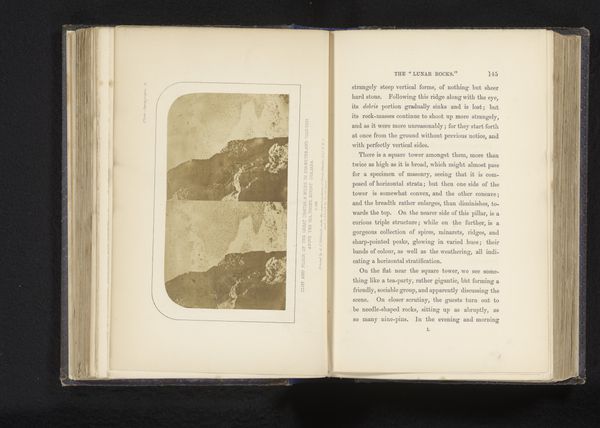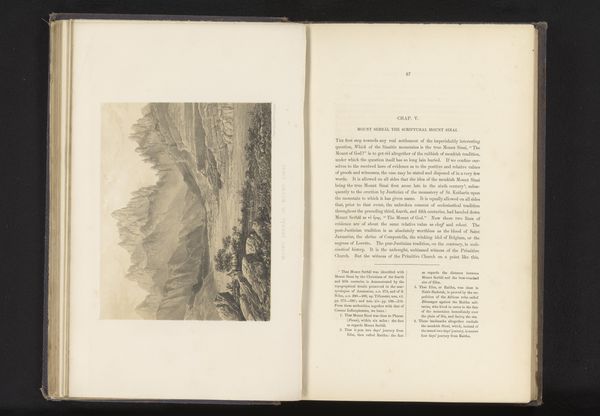
drawing, lithograph, print
#
drawing
#
animal
#
lithograph
# print
#
landscape
#
figuration
#
realism
Dimensions: height 134 mm, width 98 mm
Copyright: Rijks Museum: Open Domain
Editor: So, this lithograph before 1880 is titled 'Fotoreproductie van een tekening van een Nilgirithargeit op een rots' – or, roughly translated, a depiction of a Nilgiri Tahr on a rock. It's rather striking, actually; there's a starkness to the composition and the animal's isolation that creates a somewhat melancholic mood, don’t you think? What are your immediate impressions of the work? Curator: I observe a deliberate structuring of form and space. Note how the artist meticulously uses line and shadow to articulate the musculature of the animal. There is a tension created by the precipitous rock face and the implied depth of field behind the subject. The limited palette further serves to draw our attention to the texture and form inherent in both the animal and geological subject. Editor: It does feel very carefully considered. Is there a particular theoretical approach that seems most useful for analyzing it? Curator: Semiotics may reveal underlying cultural codes embedded within this seemingly simple representation. We can consider the image of the Nilgiri Tahr as a sign, a symbolic construct loaded with meaning. The artist may have aimed to showcase the animal in an awe-inspiring landscape, with structuralist approaches allowing the viewer to analyze its function through binary opposition between vulnerability and dominance. Editor: It’s fascinating to think about the layers of meaning present even in something seemingly straightforward. I hadn’t considered the implied opposition between strength and precarity in the setting. Curator: Yes, precisely. Even the medium itself – a lithograph – contributes to the overall effect, its textural qualities emphasizing a specific aesthetic intention, as intended with every intentional art form. Editor: That’s definitely given me a fresh perspective on how to look at the artwork. I appreciate the insight! Curator: And your observations regarding its mood serve to illuminate the ways we might all initially approach engagement with such a unique piece.
Comments
No comments
Be the first to comment and join the conversation on the ultimate creative platform.
